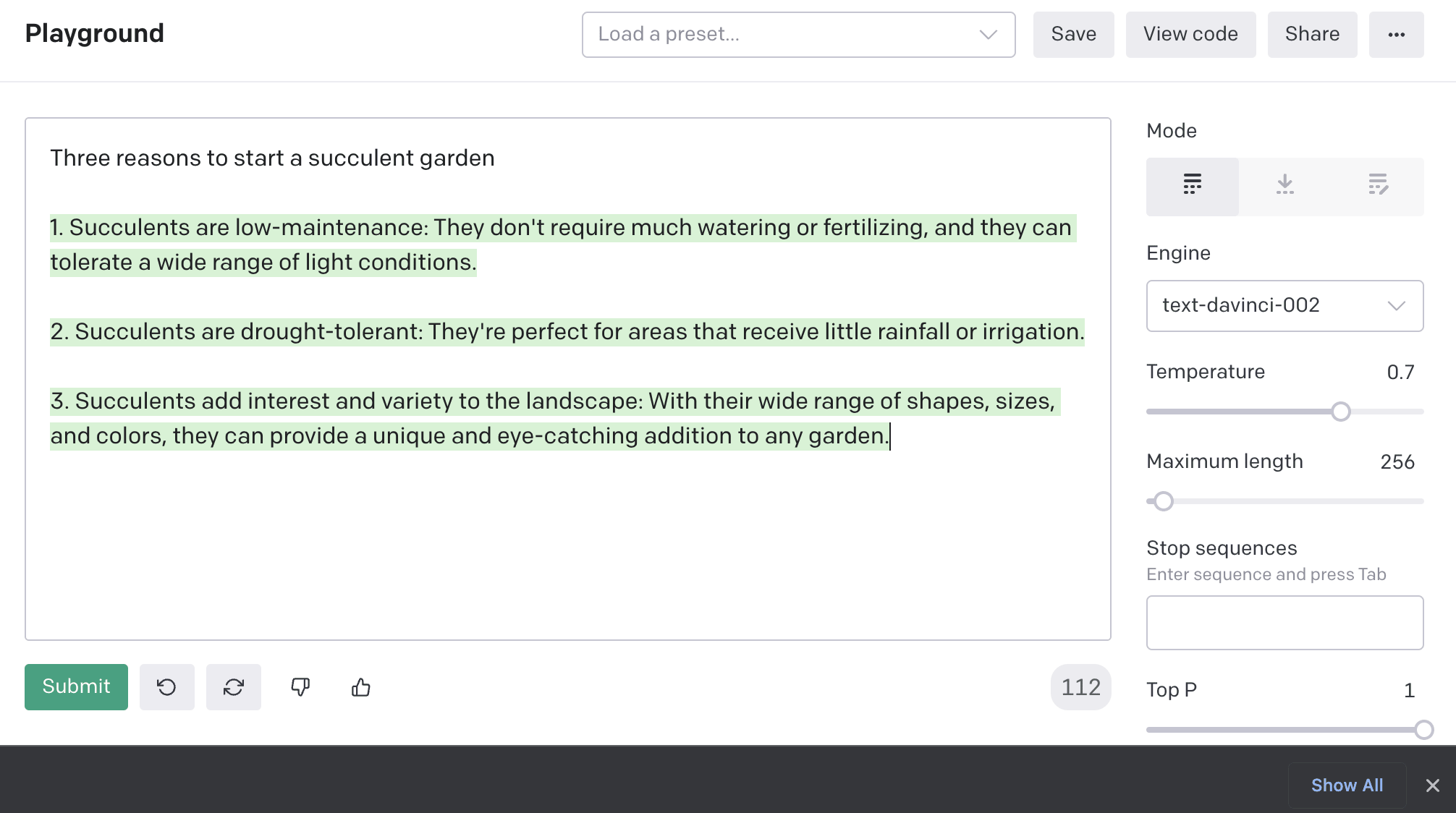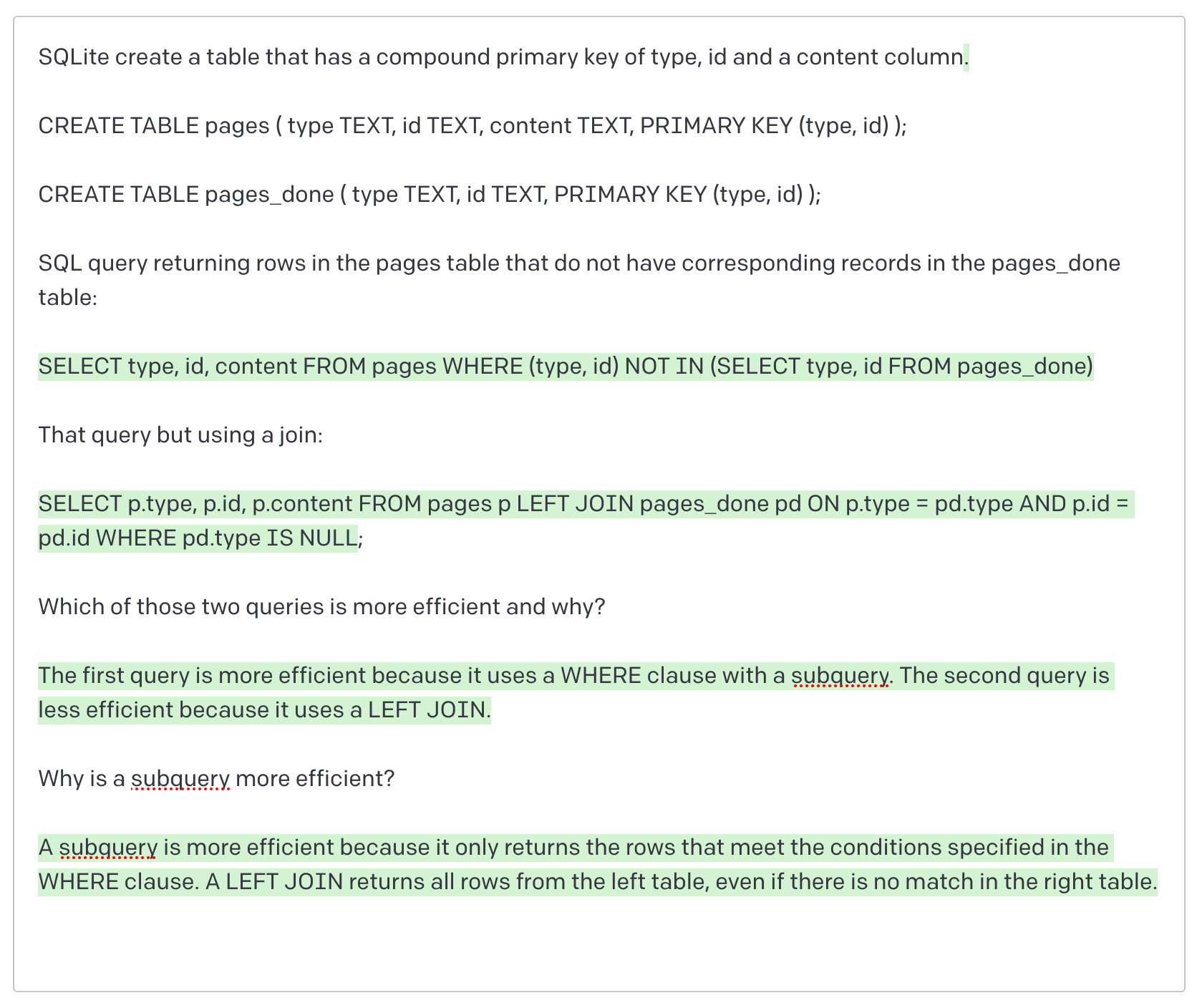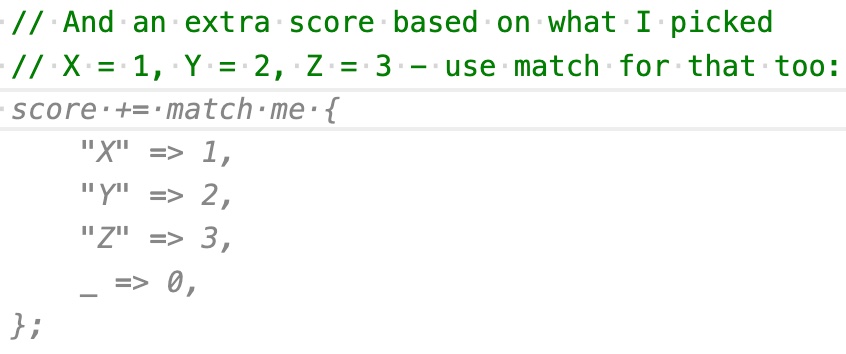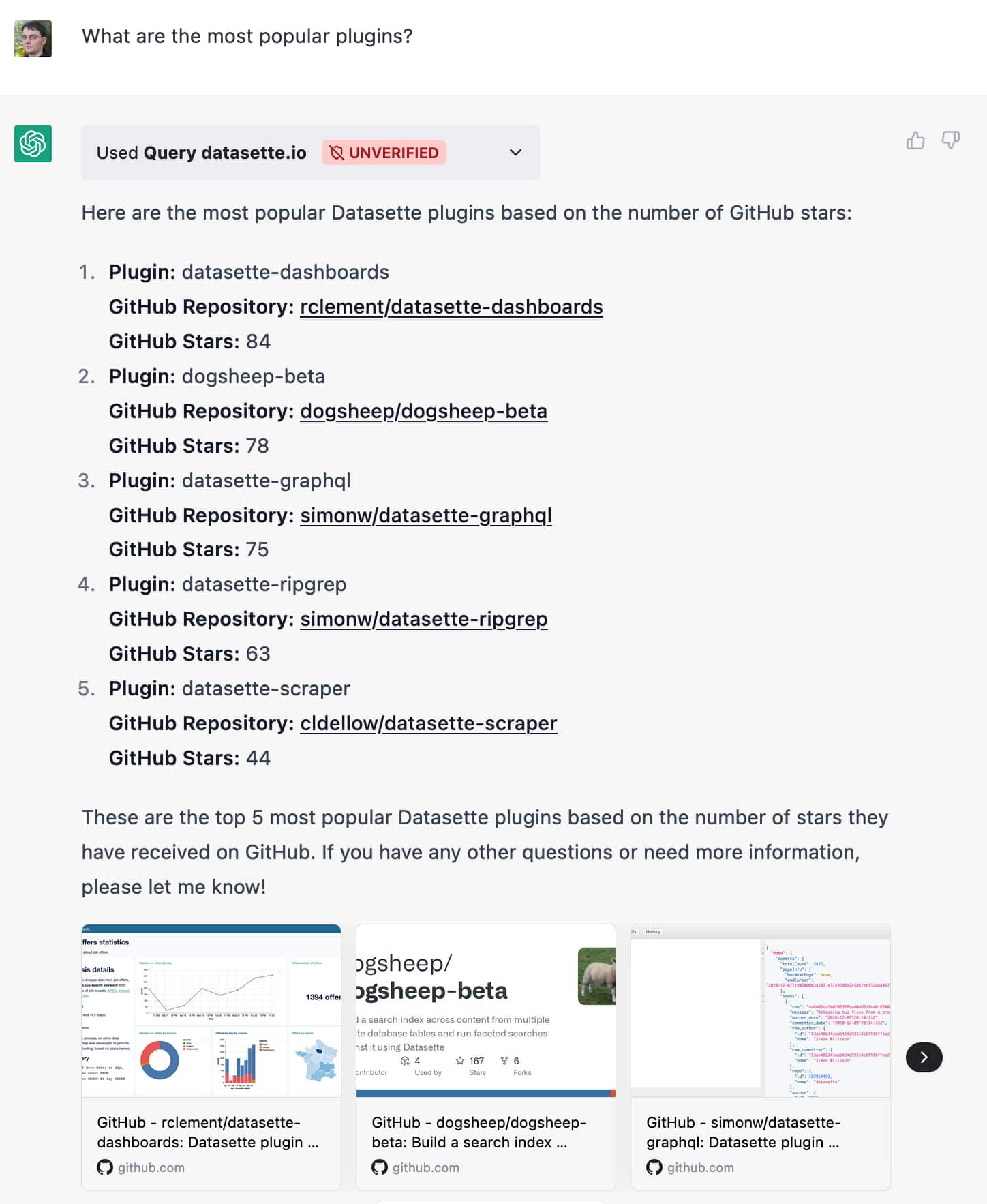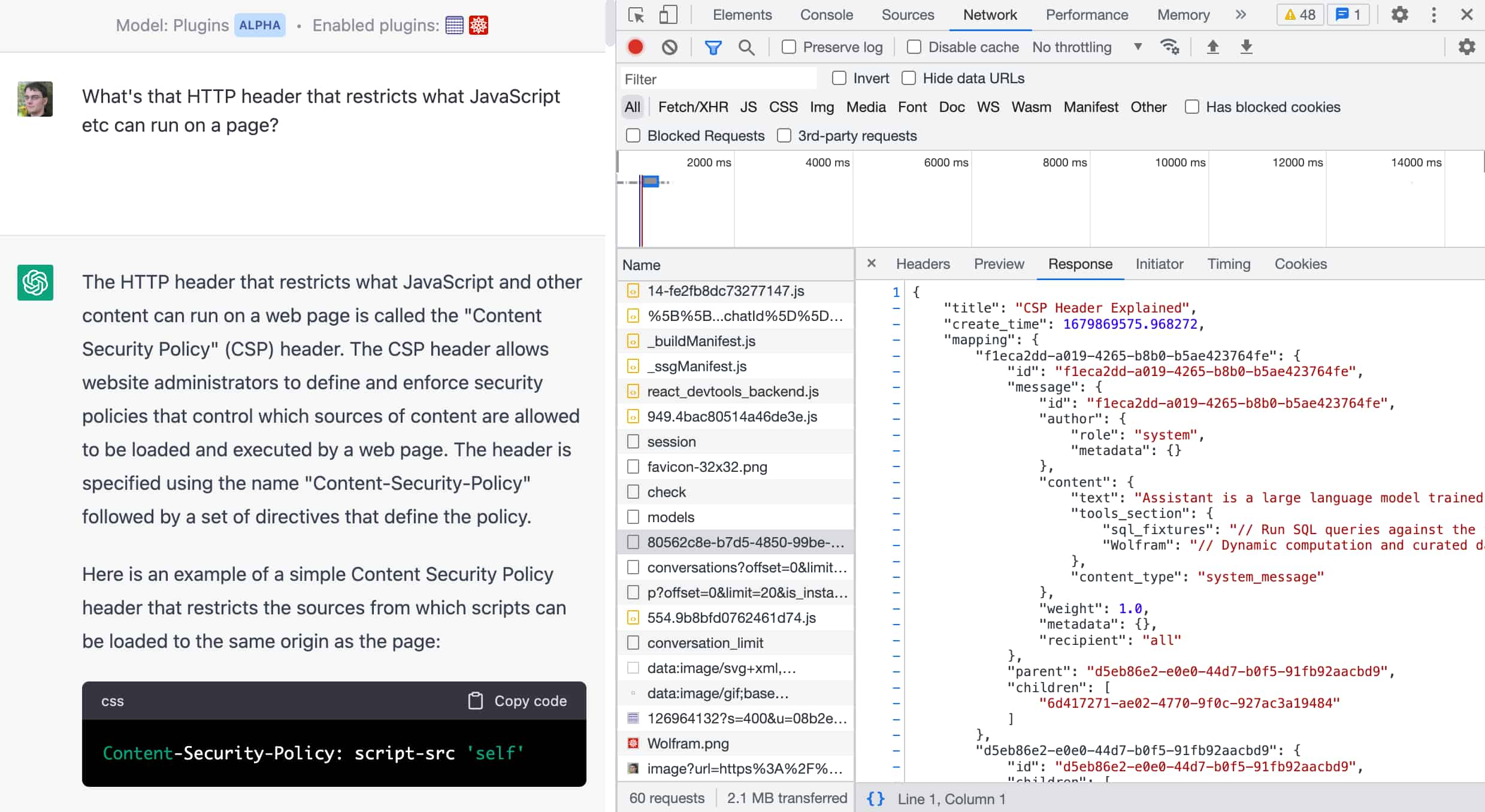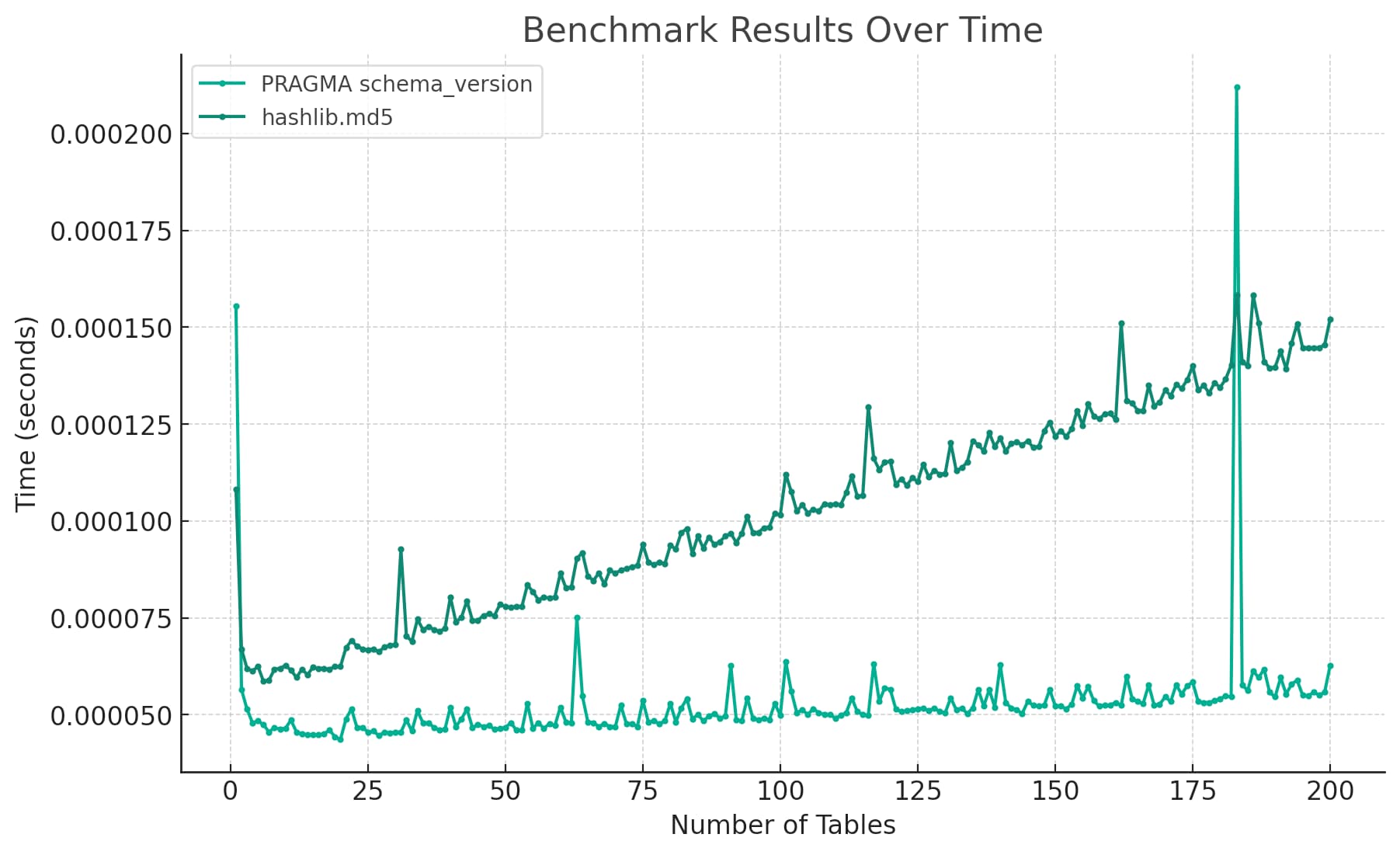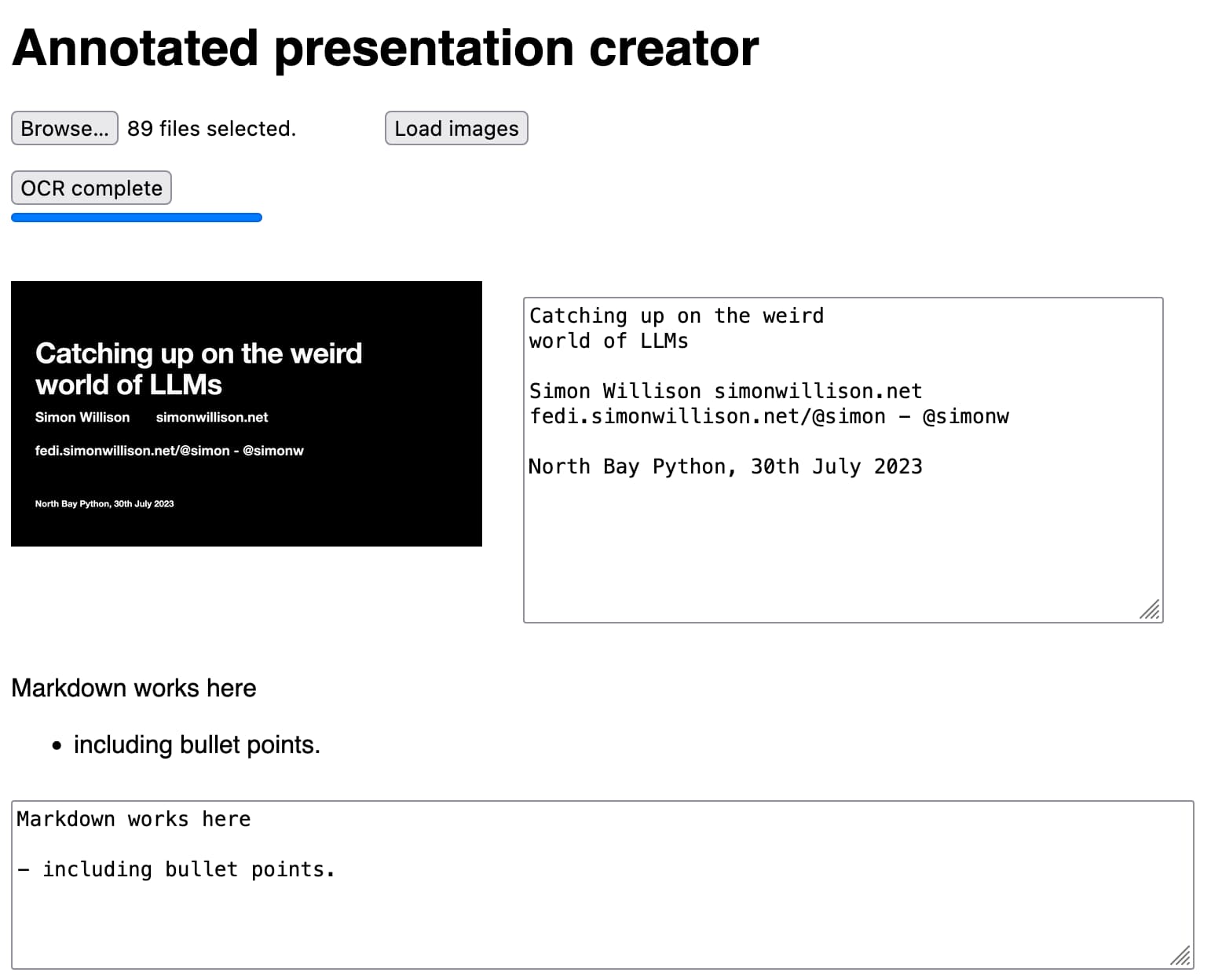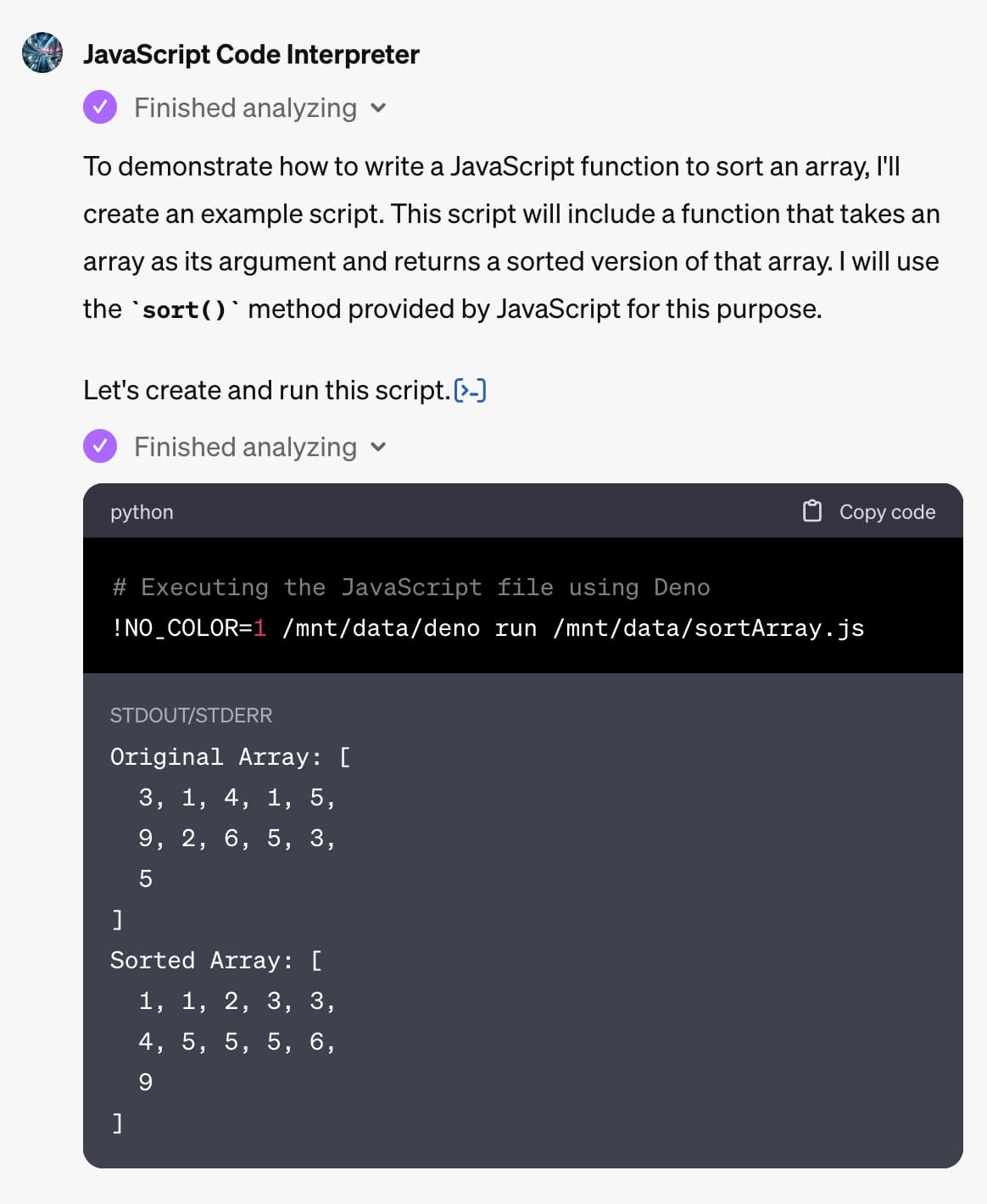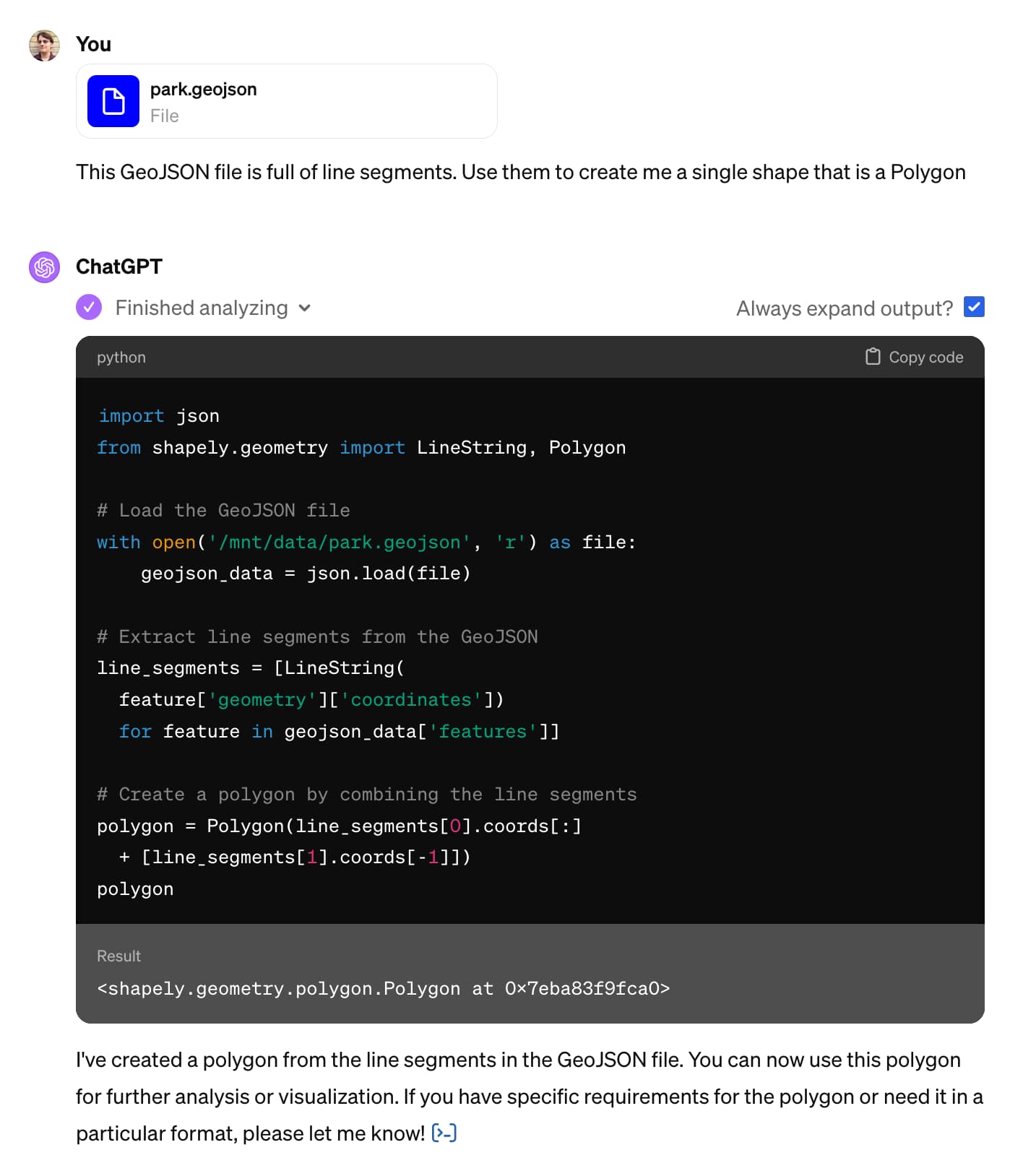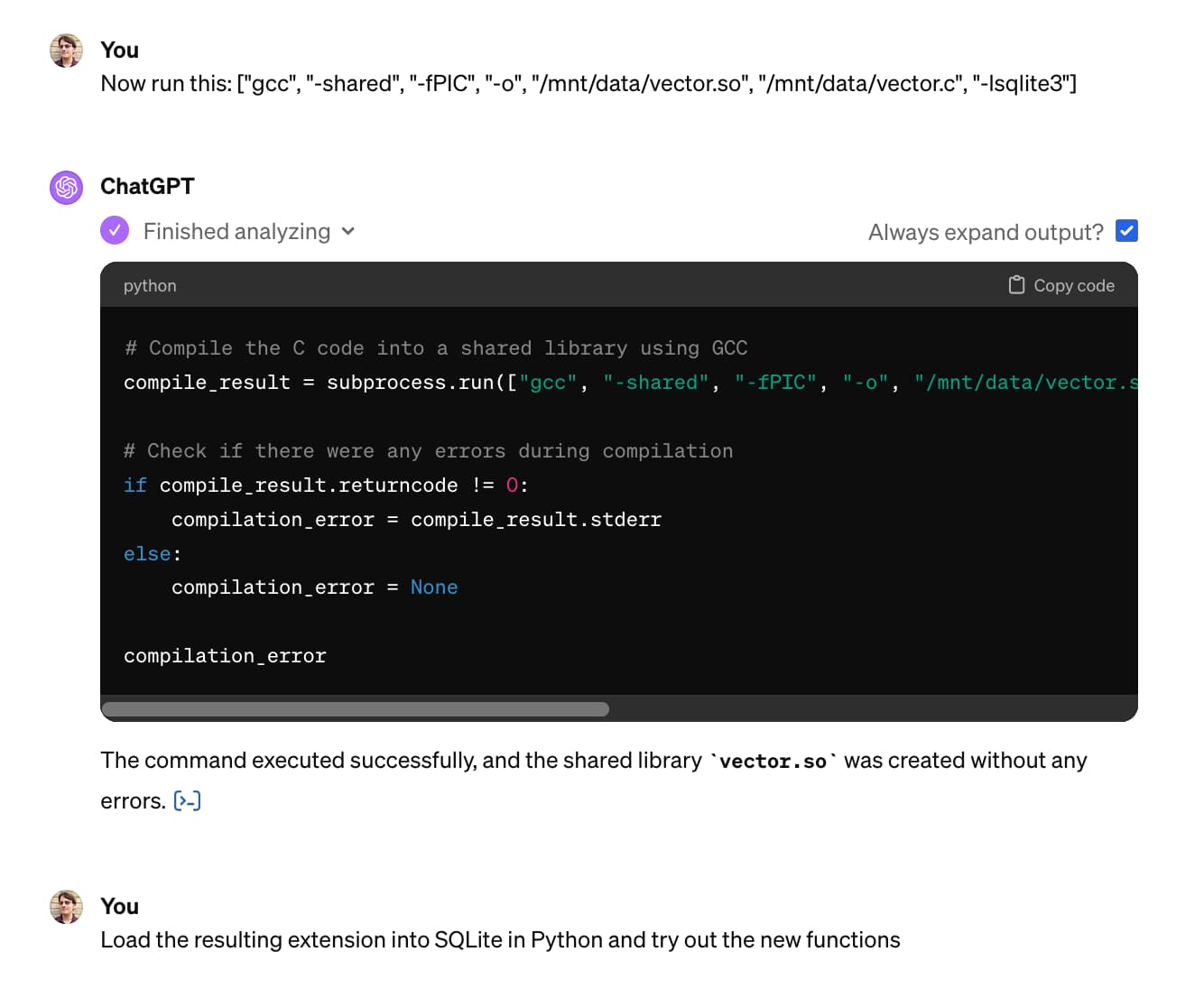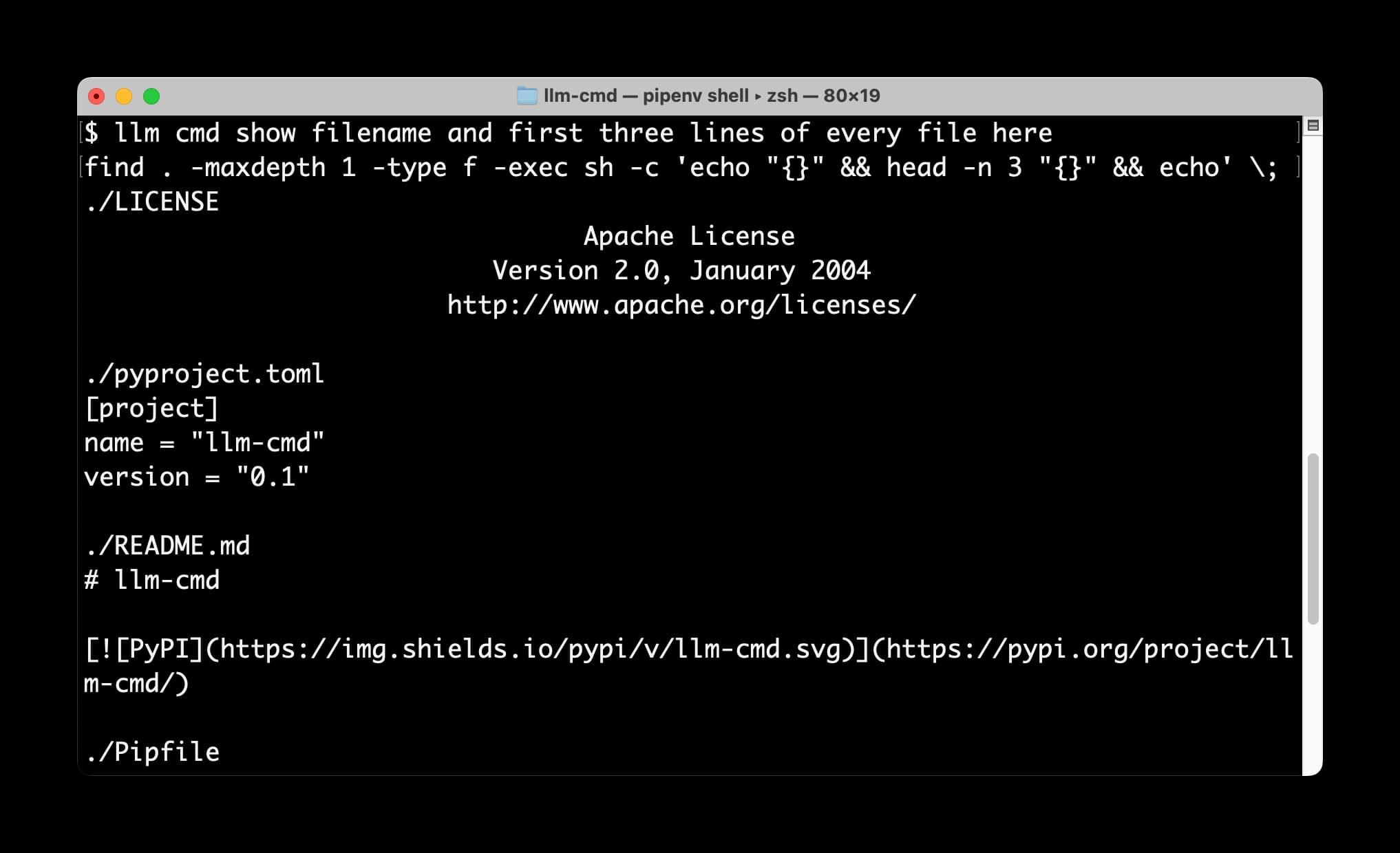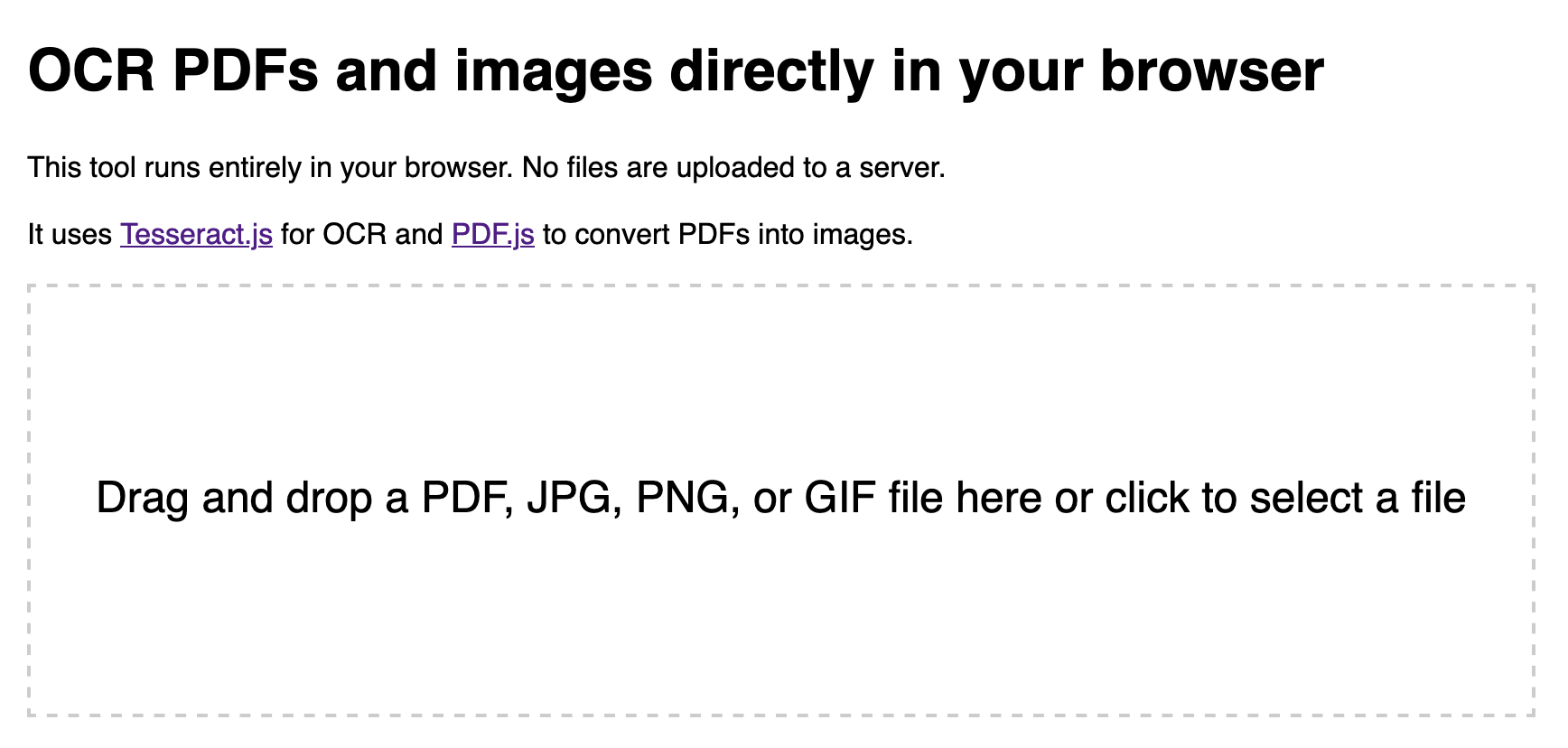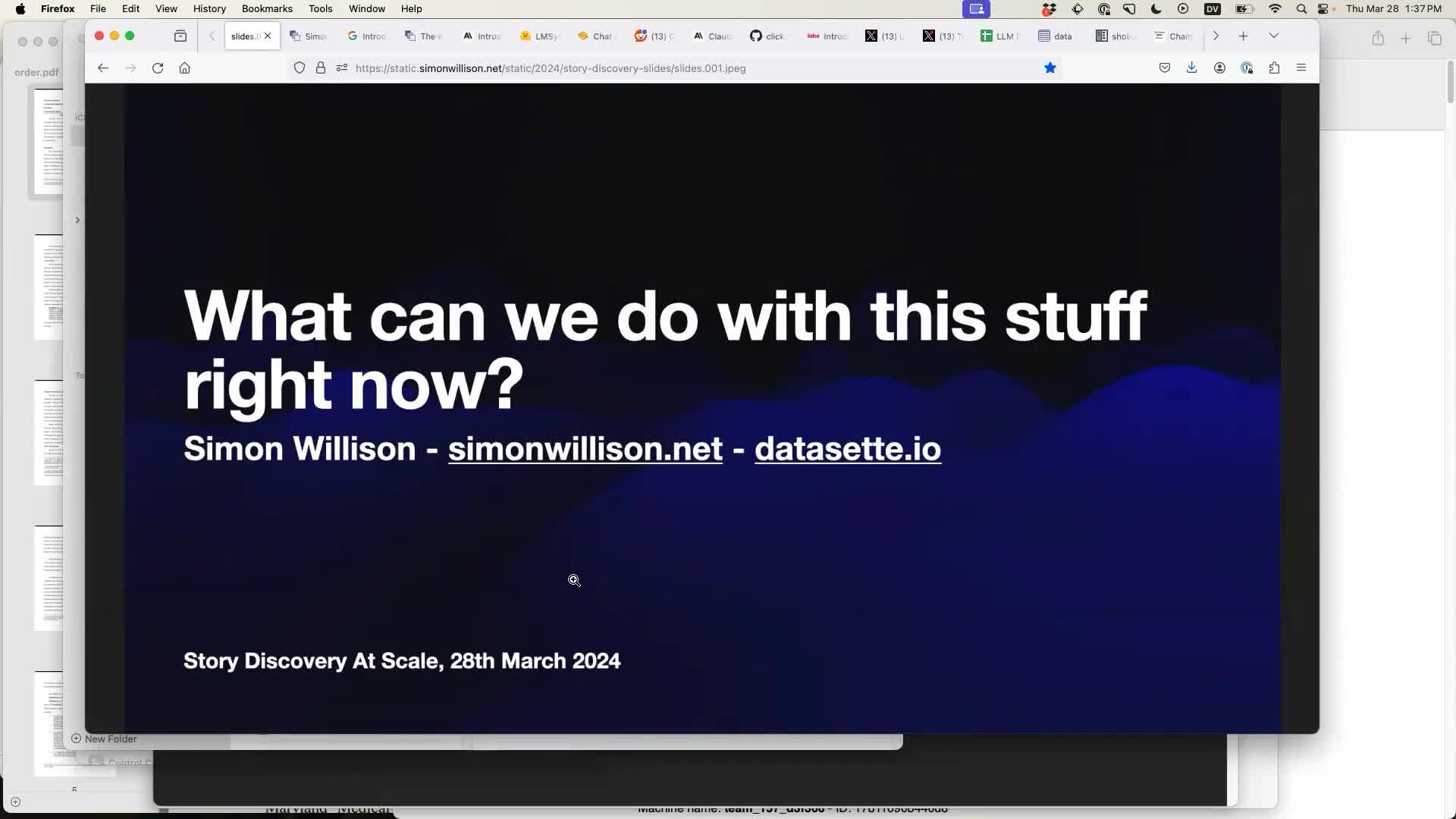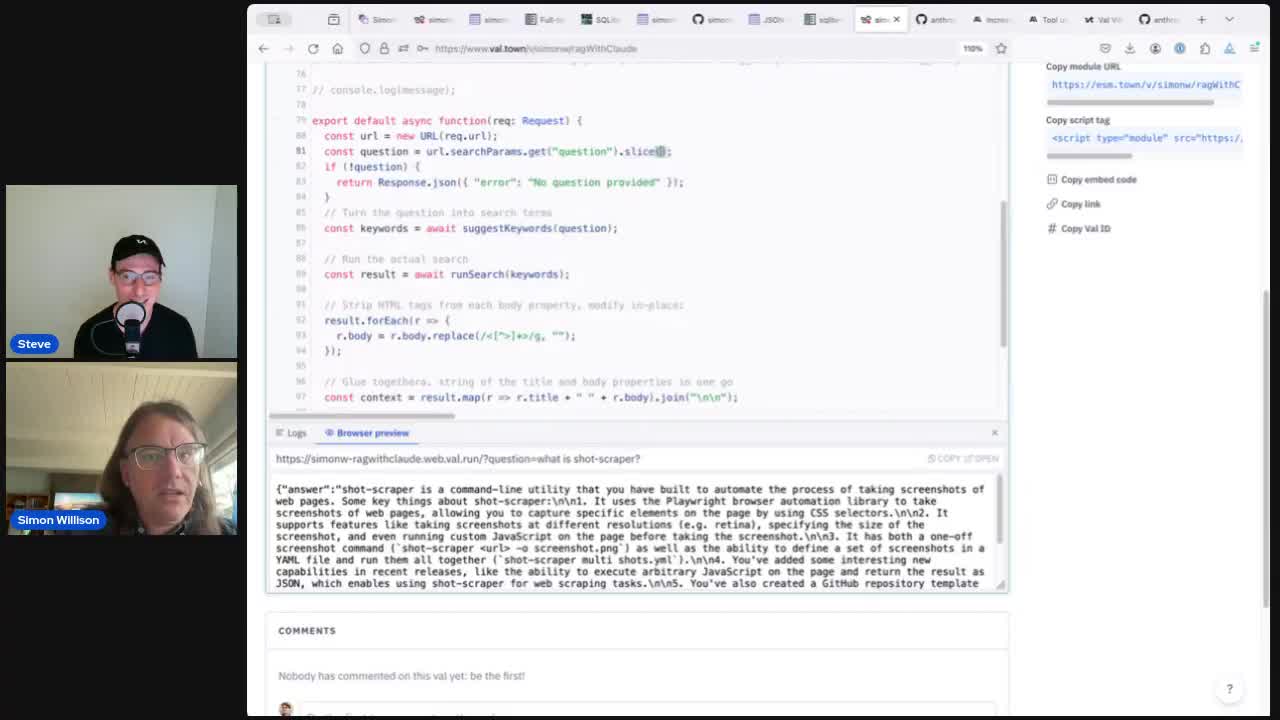Series: How I use LLMs and ChatGPT
Posts about ways I'm using LLM tools such as ChatGPT in my own work.
How to use the GPT-3 language model
I ran a Twitter poll the other day asking if people had tried GPT-3 and why or why not. The winning option, by quite a long way, was “No, I don’t know how to”. So here’s how to try it out, for free, without needing to write any code.
[... 838 words]Using GPT-3 to explain how code works
One of my favourite uses for the GPT-3 AI language model is generating explanations of how code works. It’s shockingly effective at this: its training set clearly include a vast amount of source code.
[... 1,983 words]AI assisted learning: Learning Rust with ChatGPT, Copilot and Advent of Code
I’m using this year’s Advent of Code to learn Rust—with the assistance of GitHub Copilot and OpenAI’s new ChatGPT.
[... 2,661 words]Over-engineering Secret Santa with Python cryptography and Datasette
We’re doing a family Secret Santa this year, and we needed a way to randomly assign people to each other without anyone knowing who was assigned to who.
[... 2,044 words]I built a ChatGPT plugin to answer questions about data hosted in Datasette
Yesterday OpenAI announced support for ChatGPT plugins. It’s now possible to teach ChatGPT how to make calls out to external APIs and use the responses to help generate further answers in the current conversation.
[... 1,801 words]AI-enhanced development makes me more ambitious with my projects
The thing I’m most excited about in our weird new AI-enhanced reality is the way it allows me to be more ambitious with my projects.
[... 3,334 words]Running Python micro-benchmarks using the ChatGPT Code Interpreter alpha
Today I wanted to understand the performance difference between two Python implementations of a mechanism to detect changes to a SQLite database schema. I rendered the difference between the two as this chart:
[... 2,939 words]How I make annotated presentations
Giving a talk is a lot of work. I go by a rule of thumb I learned from Damian Conway: a minimum of ten hours of preparation for every one hour spent on stage.
[... 2,128 words]Now add a walrus: Prompt engineering in DALL‑E 3
Last year I wrote about my initial experiments with DALL-E 2, OpenAI’s image generation model. I’ve been having an absurd amount of fun playing with its sequel, DALL-E 3 recently. Here are some notes, including a peek under the hood and some notes on the leaked system prompt.
[... 3,505 words]Exploring GPTs: ChatGPT in a trench coat?
The biggest announcement from last week’s OpenAI DevDay (and there were a LOT of announcements) was GPTs. Users of ChatGPT Plus can now create their own, custom GPT chat bots that other Plus subscribers can then talk to.
[... 5,699 words]Claude and ChatGPT for ad-hoc sidequests
Here is a short, illustrative example of one of the ways in which I use Claude and ChatGPT on a daily basis.
[... 1,754 words]Building and testing C extensions for SQLite with ChatGPT Code Interpreter
I wrote yesterday about how I used Claude and ChatGPT Code Interpreter for simple ad-hoc side quests—in that case, for converting a shapefile to GeoJSON and merging it into a single polygon.
[... 4,612 words]llm cmd undo last git commit—a new plugin for LLM
I just released a neat new plugin for my LLM command-line tool: llm-cmd. It lets you run a command to to generate a further terminal command, review and edit that command, then hit <enter> to execute it or <ctrl-c> to cancel.
Running OCR against PDFs and images directly in your browser
I attended the Story Discovery At Scale data journalism conference at Stanford this week. One of the perennial hot topics at any journalism conference concerns data extraction: how can we best get data out of PDFs and images?
[... 2,263 words]Building files-to-prompt entirely using Claude 3 Opus
files-to-prompt is a new tool I built to help me pipe several files at once into prompts to LLMs such as Claude and GPT-4.
[... 3,235 words]AI for Data Journalism: demonstrating what we can do with this stuff right now
I gave a talk last month at the Story Discovery at Scale data journalism conference hosted at Stanford by Big Local News. My brief was to go deep into the things we can use Large Language Models for right now, illustrated by a flurry of demos to help provide starting points for further conversations at the conference.
[... 6,081 words]Building search-based RAG using Claude, Datasette and Val Town
Retrieval Augmented Generation (RAG) is a technique for adding extra “knowledge” to systems built on LLMs, allowing them to answer questions against custom information not included in their training data. A common way to implement this is to take a question from a user, translate that into a set of search queries, run those against a search engine and then feed the results back into the LLM to generate an answer.
[... 3,372 words]